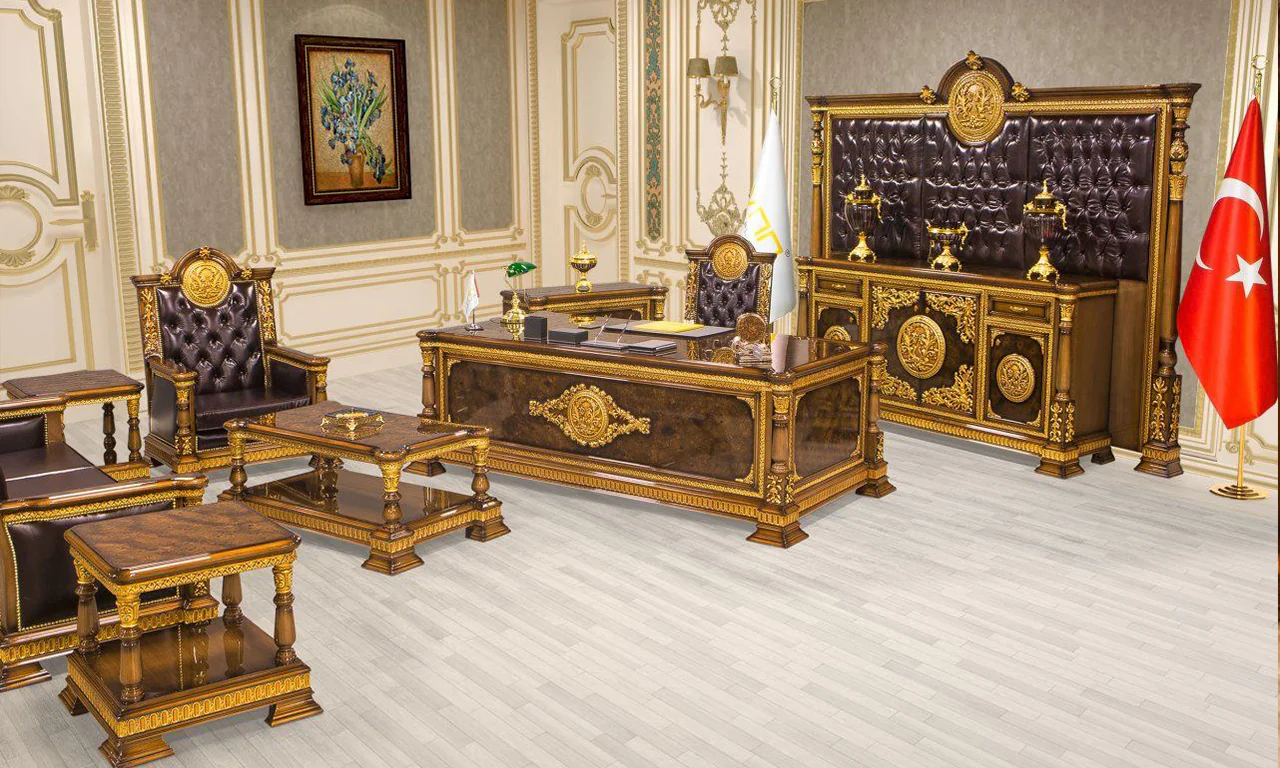Office furniture plays a crucial role in creating a productive and comfortable work environment. With employees spending significant portions of their day at their desks, the furniture choices can have a real impact on performance, health, and job satisfaction. This article will provide an overview of the key considerations when selecting office furniture for businesses and enterprises.
Properly outfitting a commercial office space goes far beyond aesthetic appeal. While appearance and design shouldn’t be overlooked, the furniture must serve functional needs above all else. Ergonomics, durability, flexibility, and cost efficiency are paramount concerns. The furnishing decisions made can help attract top talent, improve productivity and focus, and reduce long-term costs from employee discomfort. Alternatively, the wrong choices can negatively impact concentration, health, and turnover.
When undertaking an office furniture purchase or lease, it’s important to carefully evaluate your workspace needs. This article will cover the critical factors to weigh when equipping an enterprise or commercial office. It will examine the ergonomic, material, flexibility, aesthetic, and budgetary considerations. We’ll also discuss space planning, maintaining the furniture, and how to choose pieces that can adjust as your business evolves. The goal is to provide helpful guidance and tips to enable companies to make smart investments in quality pieces suited for their office environment. Evaluating your options through the lens of employee needs and business objectives will lead to optimal outcomes.
Ergonomics of Office Furniture
Ergonomic design is crucial when selecting furniture for an office space. The ergonomics, or “human factors”, of the furniture impacts the health, comfort, and productivity of employees. Choosing pieces made with ergonomics in mind can help prevent common workplace injuries and strain while enabling staff to work more comfortably and efficiently.
Some key ergonomic considerations for office furniture include:
-
Adjustability. Chairs, desks, and monitors should be height adjustable to accommodate different body sizes and enable proper posture. Employees should be able to adjust furniture to avoid hunching, reaching, or other awkward positions.
-
Lumbar support. Chairs should have excellent lower back support to minimize risk of back injuries and reduce strain from sitting all day.
-
Monitor position. Screens should be placed at eye level and at a proper distance to avoid neck strain from looking up/down excessively. Monitor arms allow optimal adjustment.
-
Wrist support. Keyboard trays and palm rests on chairs provide beneficial support and reduce stress on wrists during typing and mousing.
-
Seat cushioning. High-density, comfortable cushions prevent pressure points and enable long periods of sitting.
-
Mobility. Casters on chairs and wheel bases allow employees to move around while working, increasing blood circulation.
-
Standing options. Sit-stand desks enable intermittent standing, which research shows boosts focus and reduces back pain.
Making ergonomic choices when outfitting an office promotes good posture, increased mobility, less static positions, and overall support for the unique needs of each employee. The outcome is a more comfortable and engaged workforce with fewer repetitive strain injuries or chronic problems. Investing in ergonomics pays off in higher productivity and satisfaction.
Material Choices
When selecting materials for office furniture, there are a few common options to consider:
Wood – Wood is a popular choice for office furniture. It provides a warm, natural look and is very durable. Wood can be sanded and refinished over time. However, solid wood furniture tends to be heavy and is susceptible to scratches and water damage.
Laminate – Laminate office furniture has a plastic coating over a composite wood material. Laminate resists scratches, stains, and moisture. It is a budget-friendly option that is widely available. However, laminate can appear “cheap” and does not stand up to heavy wear and tear over many years.
Metal – Metal office furniture includes steel, aluminum and chrome. It has an industrial, modern aesthetic. Metal is extremely sturdy and durable. However, it tends to be heavy and can show fingerprints. Metal office furniture tends to be expensive.
Plastic – Plastic or polymer furniture is lightweight, moisture-resistant, and inexpensive. However, it does not have the perceived prestige of real wood. Plastic breaks down more quickly than wood or metal. High-quality plastics can mimic the look of real wood very closely.
When evaluating materials, consider factors like cost, durability, weight, aesthetics, prestige, and environmental impact. The ideal material depends on the office environment and needs of employees. Materials can also be mixed, like a wood surface on metal frames for desks and tables.
Adjustability
When choosing office furniture, it’s important to consider adjustability. Office workers have different needs when it comes to ergonomics. Offering adjustable furniture allows employees to customize their workstations for optimal health and productivity.
Investing in adjustable chairs is one of the best ways to accommodate different employees. Look for chairs that allow you to adjust the height, armrests, lumbar support, and tilt tension. This allows workers to find the perfect position for their body type and desk setup.
Height adjustable standing desks have become popular in recent years as well. They allow employees to alternate between sitting and standing throughout the day, which can reduce back pain and increase energy levels. Consider providing staff with desk risers to convert their stationary desk into a sit-stand option.
Other adjustable elements to consider include monitor arms, keyboard trays, and adjustable footrests. Having furniture that can adapt to individual needs ensures your office setup works for all employees. It shows you value their wellbeing and want to provide an ergonomic work environment.
Aesthetics
The aesthetics of your office furniture play an important role in creating a professional appearance and reflecting your company’s brand and culture. When selecting furniture, consider how it will contribute to the overall look and feel of your office space.
Some key considerations around aesthetics include:
-
Style – Select pieces that are cohesive in their design. For example, choose furniture in the same color scheme or with complementary shapes and textures. Consistent style will make your office look polished.
-
Quality – Opt for high-quality, durable furniture constructed from premium materials like hardwoods, steel, and top-grain leathers. Quality craftsmanship conveys professionalism.
-
Branding – Incorporate your brand colors and logos into furniture choices. Custom printed fabrics or laser etched logos make a strong visual statement.
-
Culture – Furniture can encourage the behaviors and interactions you want to see. For example, comfortable couches in lounge areas inspire collaboration.
-
Innovation – Seek out unique, forward-thinking designs that reflect your company’s focus on innovation. This could mean bright colors, organic shapes, or multipurpose furniture.
By carefully considering aesthetics, your office furniture can build your professional brand image while also shaping an engaging, innovative culture. The space itself becomes a communication tool.
Cost Considerations
When budgeting for office and business furniture, it’s important to find the right balance between cost and quality. Going too cheap can result in furniture that breaks down quickly or doesn’t provide adequate ergonomics and comfort for employees. However, splurging on the most expensive options isn’t always necessary either. Here are some tips for getting the most value within your furniture budget:
- Take stock of your existing furniture and only replace pieces that are broken or outdated. Refurbishing some furniture can freshen up a space at a fraction of the cost of buying new.
- Focus spending on items employees use daily like desk chairs and workstations. Items used less frequently like side chairs or lobby furniture can potentially have more budget flexibility.
- Comparison shop between furniture lines that offer different quality levels. Often you can upgrade to more durable construction, better materials, and more adjustments just by moving up one or two product lines without breaking the budget.
- Don’t sacrifice essential ergonomic functions like seat height adjustments and lumbar support to save money. Your employees’ health and comfort should be the priority.
- Consider using some standard pieces in basic materials like laminate desk surfaces paired with a few splurge items like ergonomic task chairs. This allows customization within a controlled budget.
- Work with a furniture supplier to determine where to allocate budget based on volume discounts. You may be able to upgrade certain product lines for minimal added cost if your overall purchase volume is high enough.
By carefully evaluating needs, setting priorities, and looking for potential compromise options, businesses can outfit their office within budget while still providing quality furnishings. The goal is maximizing value for the available budget amount.
Space Planning
Office space planning involves carefully designing and organizing work areas to best support employees and business operations. With open floor plans becoming more popular, space planning must optimize open environments while minimizing noise distractions.
There are several strategies to maximize open floor plan effectiveness:
-
Use shared spaces like meeting rooms, lounges, cafes so employees can collaborate without distracting nearby workers. Provide a mix of huddle rooms for small meetings and larger conference rooms.
-
Incorporate architectural design elements like sound-masking surfaces, noise-dampening panels, and partitions to absorb ambient noise. Carpeted floors or sound-absorbing materials can reduce noise traveling between workstations.
-
Arrange desks, work groups and common areas thoughtfully. Locate chatty teams away from focused work areas. Separate quiet zones from high-traffic corridors.
-
Offer a variety of spaces for different work modes – private enclaves for heads-down work, counter-height and lounge seating for casual collaboration, standing desks for movement. Provide options for employees throughout the day.
-
Use plants, screens, and low cubicle walls to create psychological divisions between work groups without total isolation. Maintain sightlines for natural light.
-
Allow personalization of workstations with photos, decor and accessories to create a sense of ownership over space.
With intentional planning, companies can foster collaboration, focus, and productivity through open floor plan optimization. Awareness of acoustics and employee needs ensures spaces effectively support different work modes.
Employee Needs
When choosing office furniture, it’s important to consult employees directly about their needs and preferences. This can lead to higher job satisfaction, improved morale, and better talent retention over time.
There are a few key ways to incorporate employee feedback when buying furniture:
-
Surveys – Create a simple survey asking about desired chair styles, desk sizes, privacy preferences, and other furniture-related needs. Make sure to allow for open-ended suggestions as well.
-
Focus Groups – Bring together employees from different roles, seniority levels, and departments. Facilitate an open discussion about how the current furniture is working and what new pieces they would find most beneficial.
-
Individual Outreach – Set up short interviews with a diverse sampling of employees. Inquire about any pain points they have with existing furniture as well as features they wish were available. Consider ergonomic needs, productivity, collaboration, and comfort.
-
Prototype Testing – Bring in sample furniture pieces for employees to test out before making final purchase decisions. Gather feedback on what works well versus potential problem areas.
Taking the time to include employees in the process can lead to better furniture decisions that improve office culture. Employees will feel valued knowing their voices were heard when selecting pieces they’ll use daily. This can bolster morale, engagement, and retention for existing employees while also making recruiting easier. Overall, office furniture that caters to employees’ needs is an investment that pays dividends.
Мебельный уход
Поддержание мебели в хорошем состоянии важно для обеспечения ее долговечности и сохранения презентабельного внешнего вида офиса. Регулярная уборка играет ключевую роль.
Поверхности столов и стульев следует протирать влажной тканью, чтобы удалить пыль и грязь. Для удаления пятен можно использовать мягкие моющие средства. Не следует применять абразивные чистящие средства или жёсткие щётки, чтобы не поцарапать покрытие.
Кресла и диваны также нуждаются в регулярной чистке, особенно тканевые и кожаные поверхности. Пылесос поможет удалить пыль, а для пятен подойдут специальные средства для чистки мягкой мебели.
Пластиковые и стеклянные компоненты офисной мебели лучше всего чистить мягким мыльным раствором.
При обнаружении поломок или повреждений, таких как треснувшее стекло, сломанный механизм настройки высоты стола или кресла, отвалившаяся столешница, необходимо своевременно обращаться в сервисную службу для ремонта. Это позволит предотвратить дальнейшие повреждения и продлить срок службы мебели.
Регулярный уход и своевременный ремонт — залог долговечности офисной мебели и экономии средств компании в долгосрочной перспективе.
Conclusion
When choosing office furniture for your business, there are a few key things to keep in mind:
-
Ergonomics – Make sure the furniture promotes good posture and allows employees to work comfortably for extended periods. Consider height adjustable desks and chairs with lumbar support.
-
Material choices – Opt for durable yet comfortable materials like mesh, fabric, and faux leather for chairs and sturdy woods or metals for desks and tables.
-
Adjustability – Look for furniture that can adapt to different users and tasks, like chairs with adjustable arms, seats, and heights and desks that can change from sitting to standing.
-
Aesthetics – Pick stylish yet professional pieces that fit your office environment and corporate brand. Neutrals like black, gray, and white along with wood tones work well in most offices.
-
Employee needs – Consider the type of work employees will be doing and customize furniture accordingly. For example, might some need standing desks while others require extra storage?
-
Maintenance – Choose easy to clean materials and well-built furniture designed to withstand frequent use and cleaning. Opt for stain-resistant fabrics and durable finishes.
Choosing the right office furniture involves balancing many factors – cost, style, ergonomics, and your employees’ needs. Invest in quality pieces that can adapt as your business evolves. With smart planning and design, your office furniture can boost productivity, collaboration, and comfort for years to come.









